Microsoft Flight Simulator Handbook
by Jonathan M. Stern
NDB Tracking Procedures
The procedures for tracking NDB bearings are outlined here:
- Select the ADF indicator by holding down the Shift key and pressing Tab or selecting Activate ADF in the Sim/Navigation Radio menu. (See Figure 18.27.)
Figure 18.27. Crosswinds increase the challenge of tracking to and from NDBs.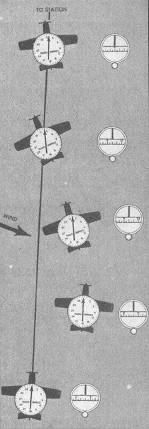
- Tune the ADF to the frequency of the NDB to which you wish to fly.
- Watch the needle for movement to a relative bearing in the approximate position of the NDB to which you have tuned. (See Figure 18.28.)
Figure 18.28. After tuning the ADF to 348, the Instrument displays a relative bearing of 45°.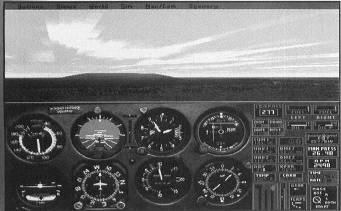
- Add the magnetic bearing to the aircraft's heading to determine the magnetic bearing to the station (if appropriate, subtract 360° from the sum).
- Turn the aircraft to the magnetic bearing. The ADF needle should now point to 0 (see Figure 18.29).
Figure 18.29. With the airplane turned to a heading of 323°, the NDB is at your twelve o'clock position.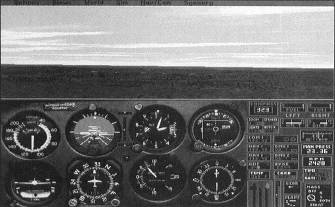
- Fly the current heading until the ADF needle moves 5° left or right of the nose (indicating that there is a crosswind). Figure 18.30 shows the five degree relative bearing.
Figure 18.30. A wind from the Northeast blows the airplane slightly off course, as indicated by the five degree relative bearing.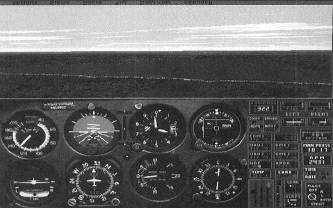
- If the needle moves 5° or more from the nose, turn the airplane 20° toward the needle. The ADF needle moves 15° to the opposite side of 0, as shown in Figure 18.31.
Figure 18.31. By turning 20 degrees into the wind, the needle moves 15 degrees left of the nose.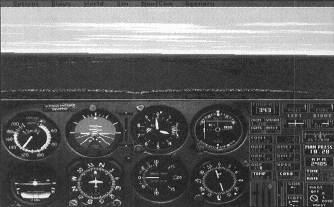
- Fly the new heading until the needle is 20° away from the nose, at which point you are back on course (see Figure 18.32). If the needle moves toward the nose, a strong wind is present and a greater wind correction angle is necessary.
Figure 18.32. When the ADF needle is 20 degrees left of the nose, the airplane is back on course and the heading must be changed to remain on course.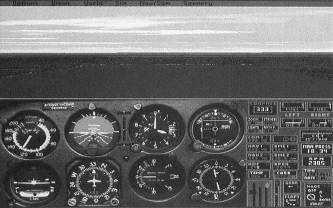
- Establish a wind correction angle by turning 10° toward your original heading. The needle now points 10° from the nose opposite the direction of the wind correction angle (see Figure 18.33).
Figure 18.33. A 10-degree wind correction angle seems to do the trick.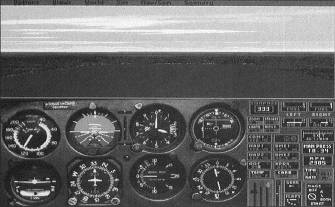
- If the needle drifts closer to the nose, the wind correction angle is insufficient. If this happens, repeat the previous steps but use a 15° wind correction angle instead of 10°.
- As the airplane passes over the NDB, the ADF needle moves from the nose to the tail. Whether the needle actually rotates all the way to a relative bearing of 180° depends on whether the airplane is precisely on course. If the aircraft is not right over the top of the NDB, the ADF needle will not reach 180°. (See Figure 18.34.)
Figure 18.34. Station passage is indicated by the rotation of the ADF needle past the 9 or 27 on the ADF compass rose.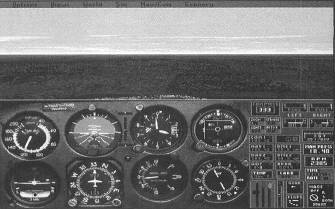
- When the needle swings, the aircraft should be turned to a heading that corresponds to the desired bearing from the NDB. For example, if you wish to track outbound on the 45° bearing from the station, turn to a heading of 45°. (See Figure 18.35.)
Figure 18.35. Some pilots find tracking outbound from an NDB trickier than tracking to an NDB.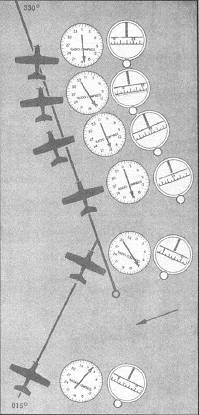
- After the airplane is established on the desired heading, the ADF should be checked to determine whether the aircraft is on course. If the needle is 5° or more off of 180°, a course correction of twice the deviation (not to exceed 90°) in the direction of the needle should be made.
For example, if the relative bearing is 190°, the airplane should be turned 20° to the left to a heading of 25°. As the airplane is turned, the needle moves another 20° to the left to a relative bearing of 210°.
- The needle moves toward 180° as the aircraft flies back toward its course. When the needle returns to a magnetic bearing of 200°, 180° plus the 20-degree intercept angle, the airplane is back on course. The airplane should then be turned to its 45° heading.
Table of Contents
Previous Section: NDB Basics
Next Section: Flying The NDB Approach
